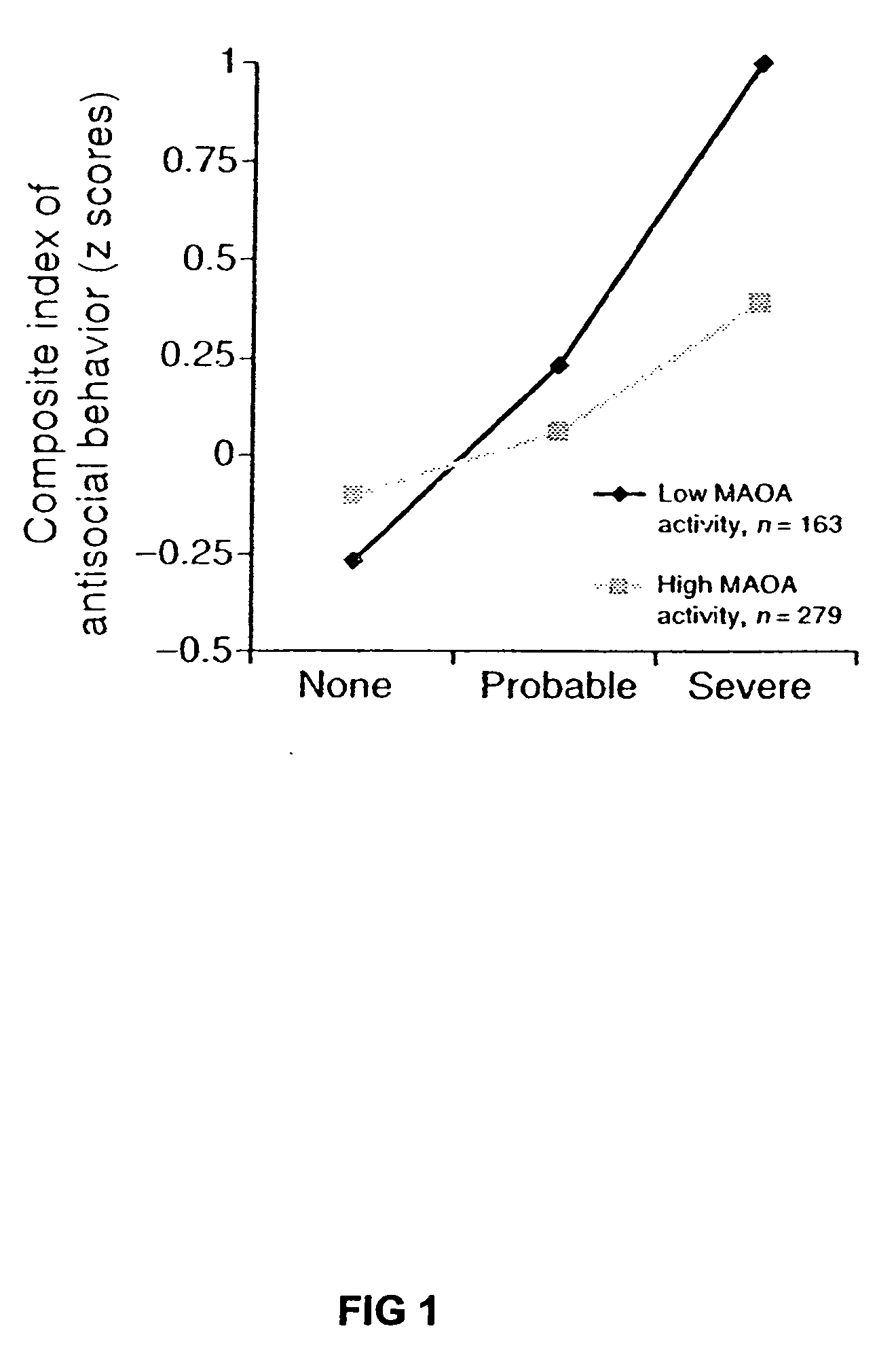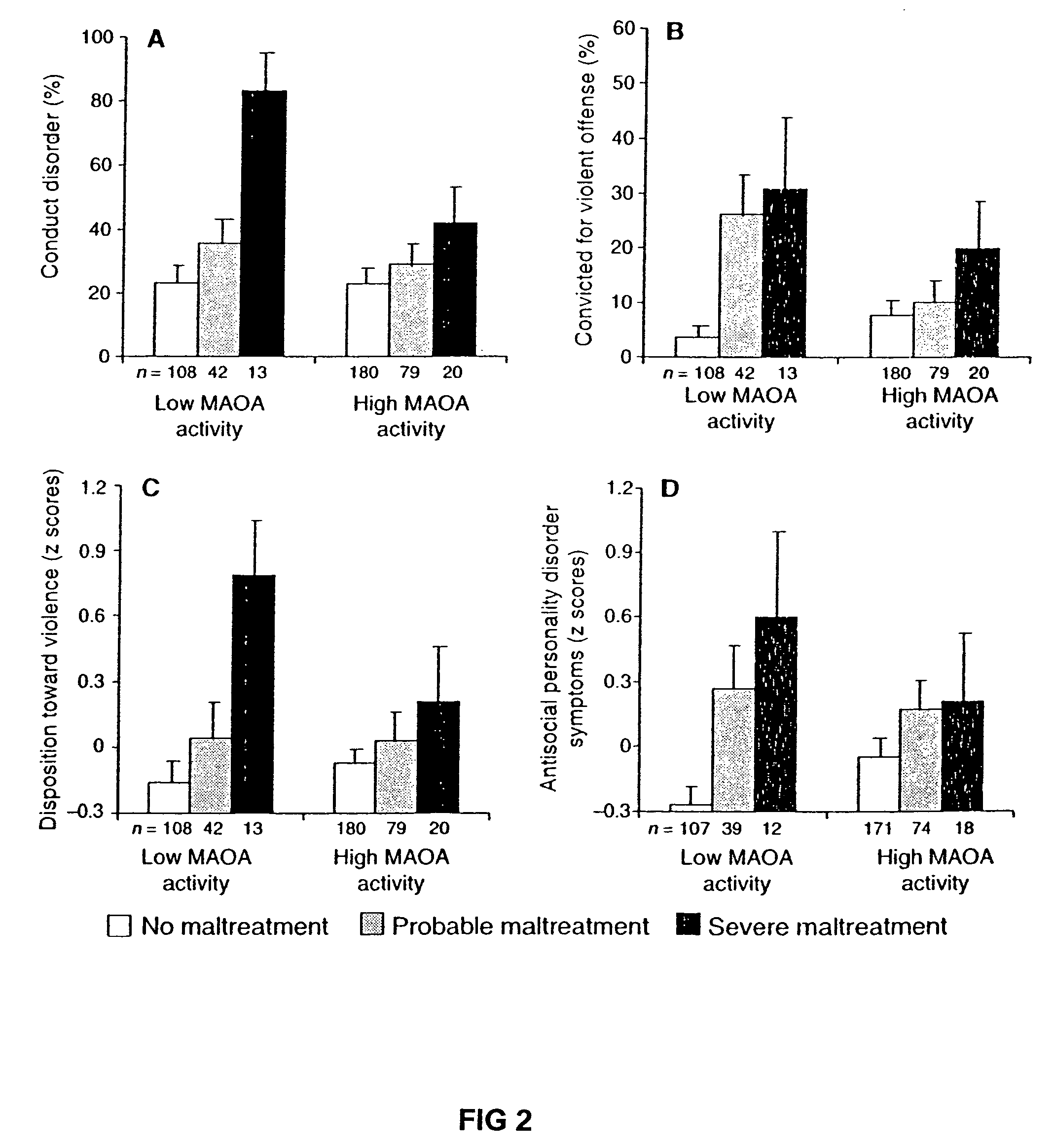Method for assessing behavorial predisposition
a behavior disorder and predisposition technology, applied in the field of behavorial predisposition assessment, can solve the problems of long-term search for conclusive evidence of the interplay between genotype and environment to yield a behavioral effect, lack of evidence, and risk of developing conduct disorder, and achieve the effect of moderating the effect of the environment on the behavior disorder phenotyp
- Summary
- Abstract
- Description
- Claims
- Application Information
AI Technical Summary
Benefits of technology
Problems solved by technology
Method used
Image
Examples
Embodiment Construction
for characterization.
[0025] It will also be appreciated that the invention facilitates identifying in an individual a positive or negative trait or strength that could warrant counseling the subject to pursue or avoid a particular type of employment. For example, an individual having no identified predisposition toward antisocial behavior might be encouraged toward a career in law enforcement.
[0026] Similarly, the link appreciated by the inventors facilitates testing of individuals who have yet to experience (or may never experience) the relevant environmental risk factor, such that an individual determined to carry the subject genetic attribute can be counseled or directed to avoid the environmental risk factor. Additionally, the subject can receive therapy of a psychological or pharmaceutical nature. Prior to the invention by the applicants, the skilled person would not have appreciated the need for vigilant monitoring and treatment of such individuals in that regard.
[0027] In y...
PUM
| Property | Measurement | Unit |
|---|---|---|
| length | aaaaa | aaaaa |
| reactivity | aaaaa | aaaaa |
| Disorders | aaaaa | aaaaa |
Abstract
Description
Claims
Application Information
 Login to View More
Login to View More - R&D
- Intellectual Property
- Life Sciences
- Materials
- Tech Scout
- Unparalleled Data Quality
- Higher Quality Content
- 60% Fewer Hallucinations
Browse by: Latest US Patents, China's latest patents, Technical Efficacy Thesaurus, Application Domain, Technology Topic, Popular Technical Reports.
© 2025 PatSnap. All rights reserved.Legal|Privacy policy|Modern Slavery Act Transparency Statement|Sitemap|About US| Contact US: help@patsnap.com


